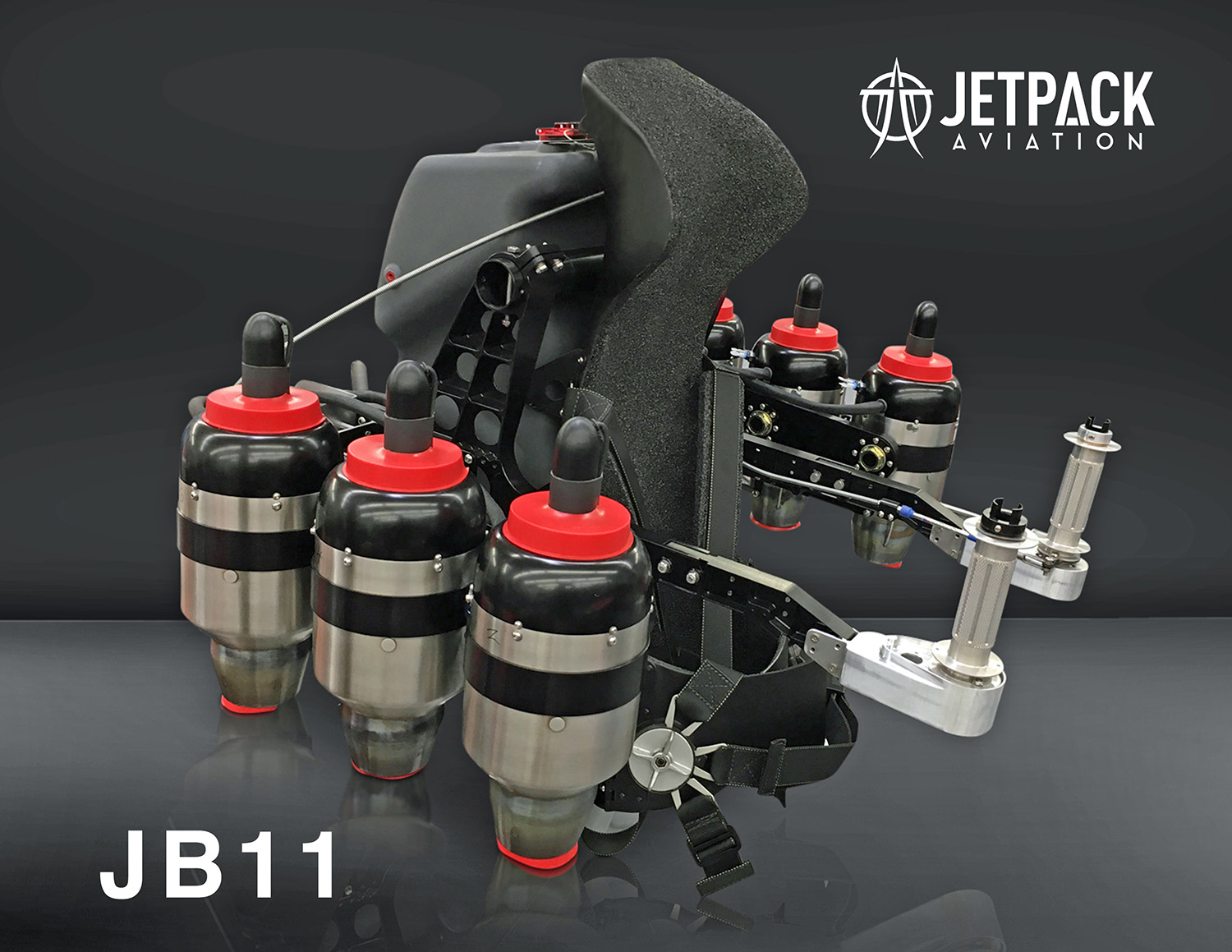Jetpack maker approaches sales with caution
JetPack Aviation celebrated in November the FAA determination that the two-engine JB10 is considered an ultralight and can be flown under Part 103, and debuted a new model, the six-engine JB11, at the Consumer Electronics Show in Las Vegas this month. Company CEO and test pilot David Mayman remains one of a handful of humans allowed to fly an untethered jetpack, and he’s not in a rush to ship one your way.
While the $250,000 price tag attached to the JB10 model will put it out of reach of the masses, Mayman has in recent years stirred plenty of interest with public flight demonstrations of what he describes as the only “true” jetpack in the world. Powered by turbojet engines adapted from high-speed target drones, the JB10 and JB11 models use custom electronics and control systems designed by Nelson Tyler and a small team working in California, where the company is based.
It’s not for everyone.
“Of course, we’re working on our emergency parachute system,” Mayman said. “We haven’t made them available, technically, to the market, because the safety system is not yet established.”
Mayman considers the emergency parachute systems being designed for the JB10 and JB11 models essential equipment, though technically not among the FAA requirements for selling jetpacks to the public. He has so far sold just one JB10, to a group in Europe.
“They were able to convince me that they were going to be” safe without a parachute installed, Mayman said. “We agreed to make that available.”
Others have tried to persuade Mayman to part with a jetpack, promising caution and care, or self-imposed limits of various kinds. “I’ve heard it all,” Mayman said with a chuckle.
Mayman and his team devised a tether system, attaching the jetpack to an overhead cable allowing student pilots to dangle safely while learning how to maneuver and control the system.

“We are starting what I guess would be the world’s first jetpack school and discovery center in Southern California,” Mayman said. The location is still to be determined, and the training program won’t be cheap. Mayman expects to charge $3,000 for a basic introduction to jet pack aviation, upward to $25,000 or more for a complete course. Graduates will still have to wait to fly on their own.
“Can they take a jetpack home after” completing the training? “The answer is, not really, at the moment.”
Mayman has allowed potential military customers to don a jetpack and give it a try. Special forces operators and first responders are among those inquiring, and the new JB11 model unveiled at the Consumer Electronics Show in Las Vegas on Jan. 9 will have enough thrust to lift more than just the pilot. It also will have increased endurance, since Mayman does not plan to seek FAA approval for the JB11 under Part 103 limitations, which include a five-gallon limit on fuel capacity.
“You could effectively carry it around in an SUV or a purpose-built van that we’re designing,” Mayman said.
JetPack Aviation teamed up with Insta360, makers of 360-degree cameras, for the CES display. While marketing a product that aims for a relatively narrow niche at a show created to show off gadgets and devices for a mass audience might seem like an odd choice, Mayman said it paid off.
“We had an extraordinary amount of interest at CES,” Mayman said. “I think CES is attracting people that are looking to the future, whether it’s new electrical gadgets or TVs, or whether it’s the future of urban mobility.”




